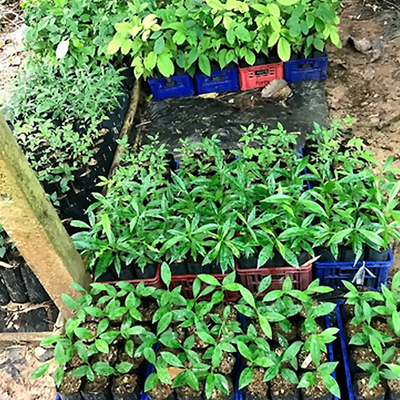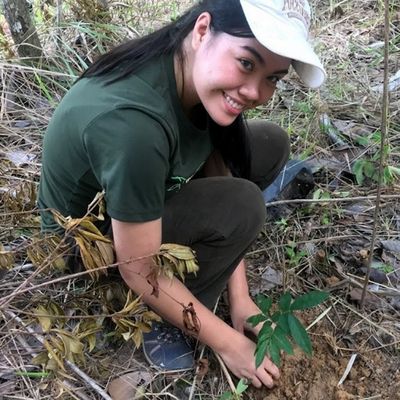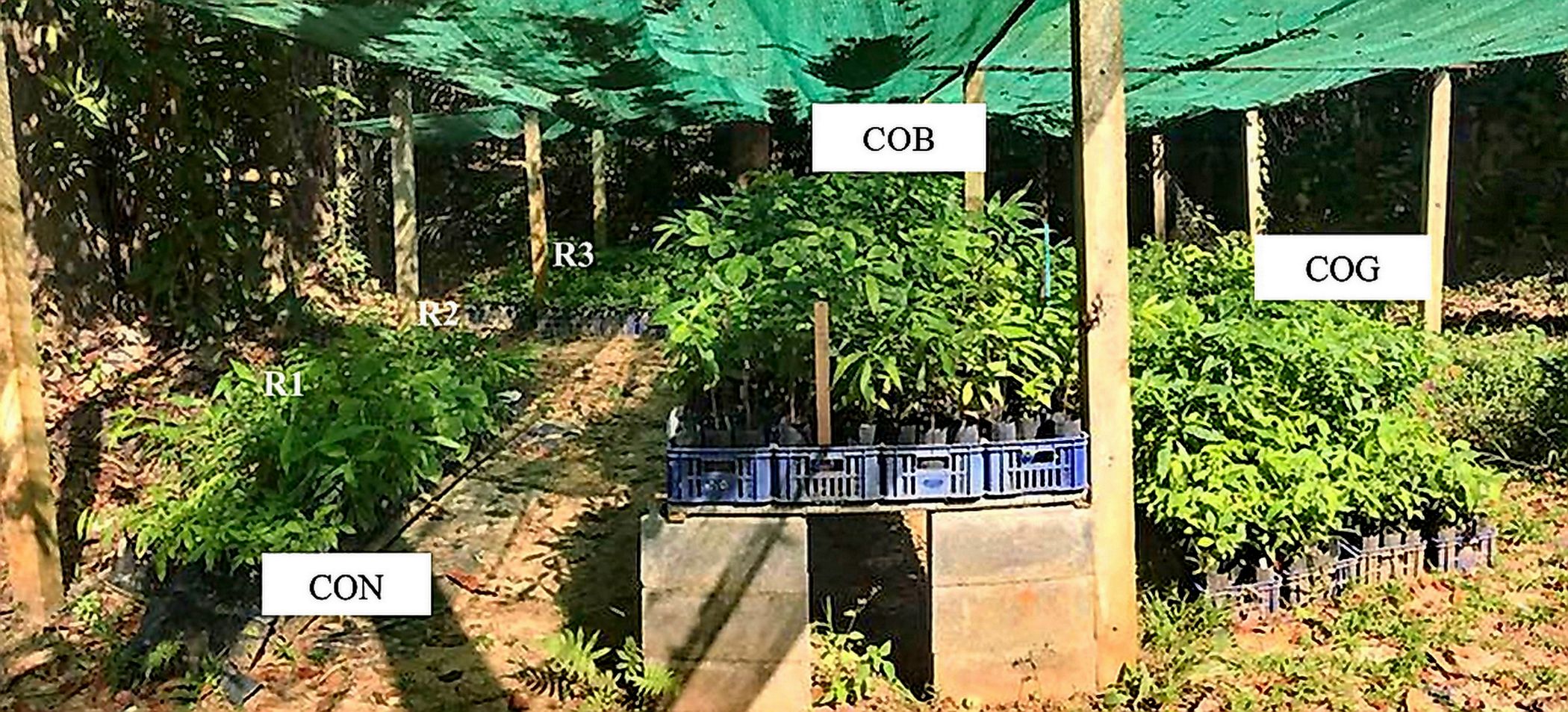The call to restore the world's forests has never been louder. From the UN Decade on Ecosystem Restoration to global climate-change initiatives, the demand for high-quality planting stock—the saplings that will one day grow into a thriving forest—is surging. But a major hurdle remains: producing millions of healthy, resilient saplings cost-effectively, particularly in tropical regions where the need is most urgent.
A groundbreaking study by FORRU-CMU’s research student, Preeyaphat Chaiklang may have found a surprisingly simple solution: the humble plastic bottle crate. While traditional methods often leave saplings with weak, malformed root systems, the CMU research student discovered that growing saplings in repurposed bottle crates can produce healthier, stronger trees that are far more likely to thrive in the wild.

Preeyaphat’s study, however, tested a method of "crating," whereby saplings in polybags are placed inside standard plastic bottle crates. The key to this technique lies in "air root-pruning." Placing polybags in crates allows air to circulate beneath and between the bags. Any roots which grow out from the polybags are exposed to air. This causes die back of the root tips, which stimulates root branching within the polybag. A dense root ball forms, which holds the potting medium together as the trees are transplanted from the polybags into the soil of the restoration site.
The results were remarkable. Saplings grown using the crate-based system, grew better root systems, which translated into superior performance after planting. The study found that crated saplings experienced significant increases in height growth and crown expansion in their first year after planting in the field. Over the same time period, the field mortality of saplings that had been grown in crates (7.3%) was about half that of saplings grown conventionally (14.0%).
Beyond the biological benefits, the crate method offers significant practical and economic advantages. It’s a low-cost, locally sourced solution that utilizes discarded plastic crates; an environmentally friendly alternative to importing expensive, purpose-made "root trainers". The study also showed that crating is cheaper than conventional polybags, stood on the ground - reducing production costs by up to 5 US cents per tree. The extra cost of buying crates was more than offset by the higher number of trees surviving in the field after one year. When the millions of trees needed to fulfil global restoration targets, these savings add up quickly, making large-scale restoration projects more feasible and affordable. The crates also simplify the process of handling and transporting saplings in the nursery, streamlining the entire production process, resulting in happier and more efficient nursery staff.

In the global effort to combat deforestation and restore vital forest ecosystems, every advantage counts. This simple, elegant solution—using repurposed plastic crates to give tree saplings a better start in life—could be a game-changer, helping to accelerate forest-restoration efforts and build a greener, healthier future for all.
Please read the full paper here (open access):
Chaiklang P., Elliott S., Chairuangsri S., Tiansawat P. (2025). Effects of a low-cost crate-based tree-propagation system on the field performance of framework species when initiating lowland tropical forest restoration. In Trees, Forests and People: https://www.forru.org/library/0000314

